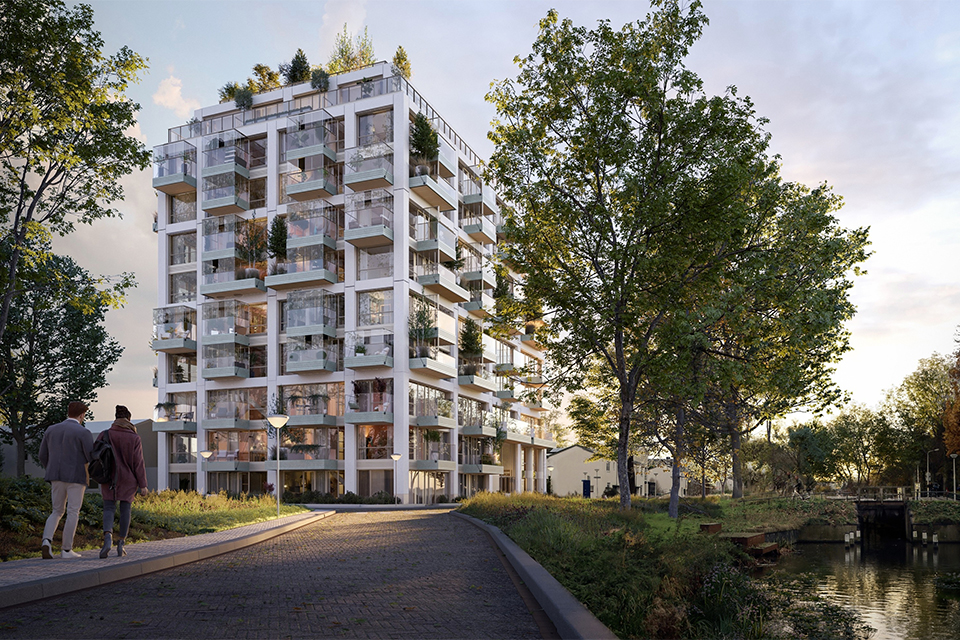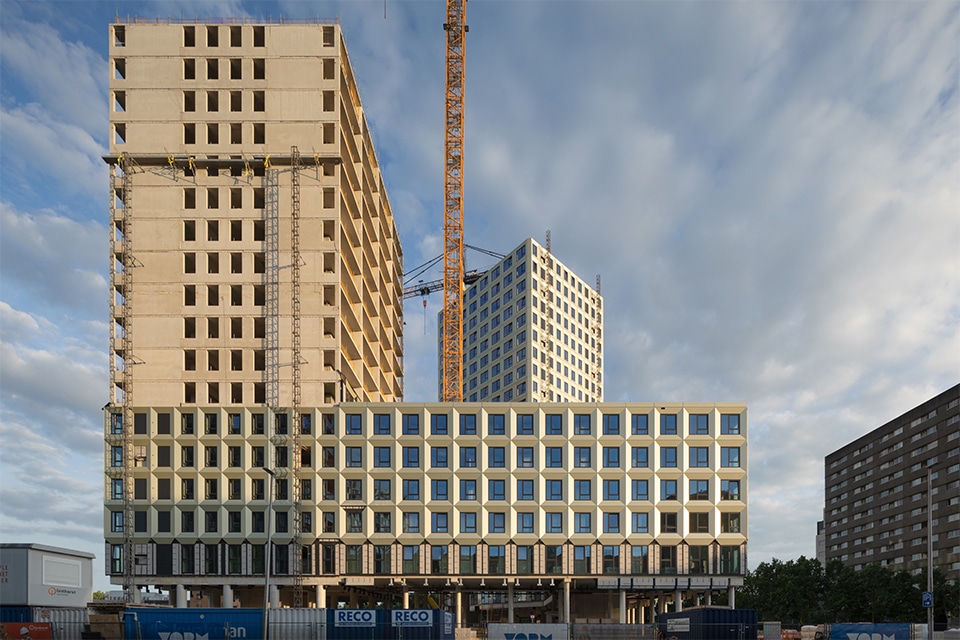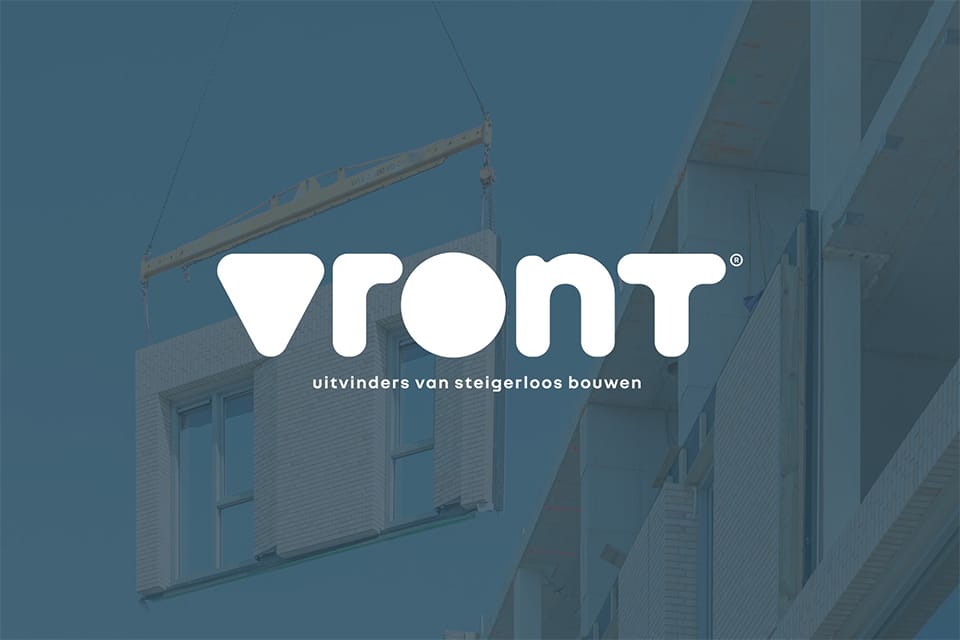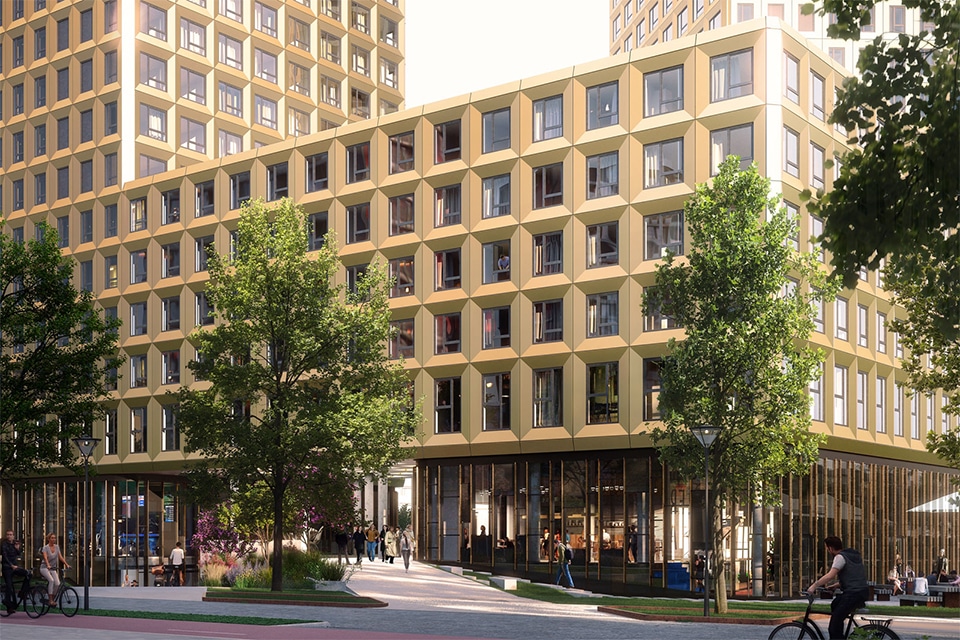
"Prefabricated wood frame construction is the element of the future"
The manufacturer of HSB elements, which has been communicating under the Kroonhout label since 2020, is gaining increasing prestige as a construction partner in new construction and transformation projects. Both the high-quality products and the integral working method contribute to this.
"Kroonhout is a label of K&A Group," says director Pascal Vergouwen. "K&A Group has been active in the market for 25 years as a builder of timber construction bulkhead chains, pavilions and club buildings. With Kroonhout, we are breaking new ground. Responding to the increasing need for future-proof solutions, we offer customized solutions in prefabricated timber frame construction. HSB elements are durable, airtight and they contribute to an efficient construction process. Moreover, they are much lighter than concrete, for example. As a result, structures and foundations do not have to be loaded as heavily and, therefore, less heavily executed."
Knowledge sharing and construction partnership
The HSB elements that Kroonhout engineers and produces are of high quality. A matter of course, in Vergouwen's opinion. "We mainly make a difference through our way of working. Knowledge sharing and construction partnership are central to this. More and more contractors are involving us in their construction team at an early stage. Within such a construction team, we make optimum use of each other's expertise and arrive at an interesting, realistic offer."
Integral design
"We also like to think along in the engineering phase," Vergouwen continues. "A key focus at that stage is the construction of the HSB element, related to the project. A lot of attention is also paid to the right detailing and connections and the coordination with the other disciplines. Here BIM 3D design software is indispensable. By integrating all disciplines into one three-dimensional model, the margin of error is significantly reduced. Any clashes are detected and eliminated at an early stage."

Facade-ready products
Another advantage of BIM is that Kroonhout's semi-automated production line connects seamlessly with the drawing program. What is built virtually is made one-to-one by the machines. Vergouwen: "We prefabricate the HSB elements into facade-ready products and, if desired, build in the frames 'ex-factory'. This takes place in our own production hall, under climate-controlled conditions. As a result, the quality of our products is constant. Moreover, we can schedule the delivery of the elements just-in-time. At the construction site, it is only a matter of assembly."
From transformation to new urban district
Meanwhile, a good number of new construction and transformation projects have already been fitted with Kroonhout's HSB elements. Vergouwen mentions a number of examples: "For Heembouw, we engineered and produced the interior cavity walls for the Rachmaninoff House. In this project, the former city office on Rachmaninoffplantsoen in Utrecht was transformed into a residential building with 132 apartments. We also provided De President in The Hague and Heembouw's new, sustainable office in Berkel en Rodenrijs with our interior cavity walls. Another fine example is Zeeburgereiland Blok 26 in Amsterdam. For this new urban district by the water, we engineered and produced the HSB elements and structural frames for seven buildings for Bouwcombinatie Zeeburgereiland (Kondor Wessels Amsterdam and Boele & van Eesteren). And for Van Wijnen we are involved in the new construction of several residential blocks on Amsterdam's Oostenburgereiland."
Futures
As a manufacturer of HSB elements, Kroonhout has the product of the future in its hands. Asked what his vision of that future is, Vergouwen replied, "I see various opportunities to expand our production line. But also to go even further in the prefabrication process, so that we can deliver our elements even more ready-made. Furthermore, we remain firmly committed to knowledge sharing and partnerships. Making use of each other's added value is something we must do even more of. That way we can all achieve the best result."



